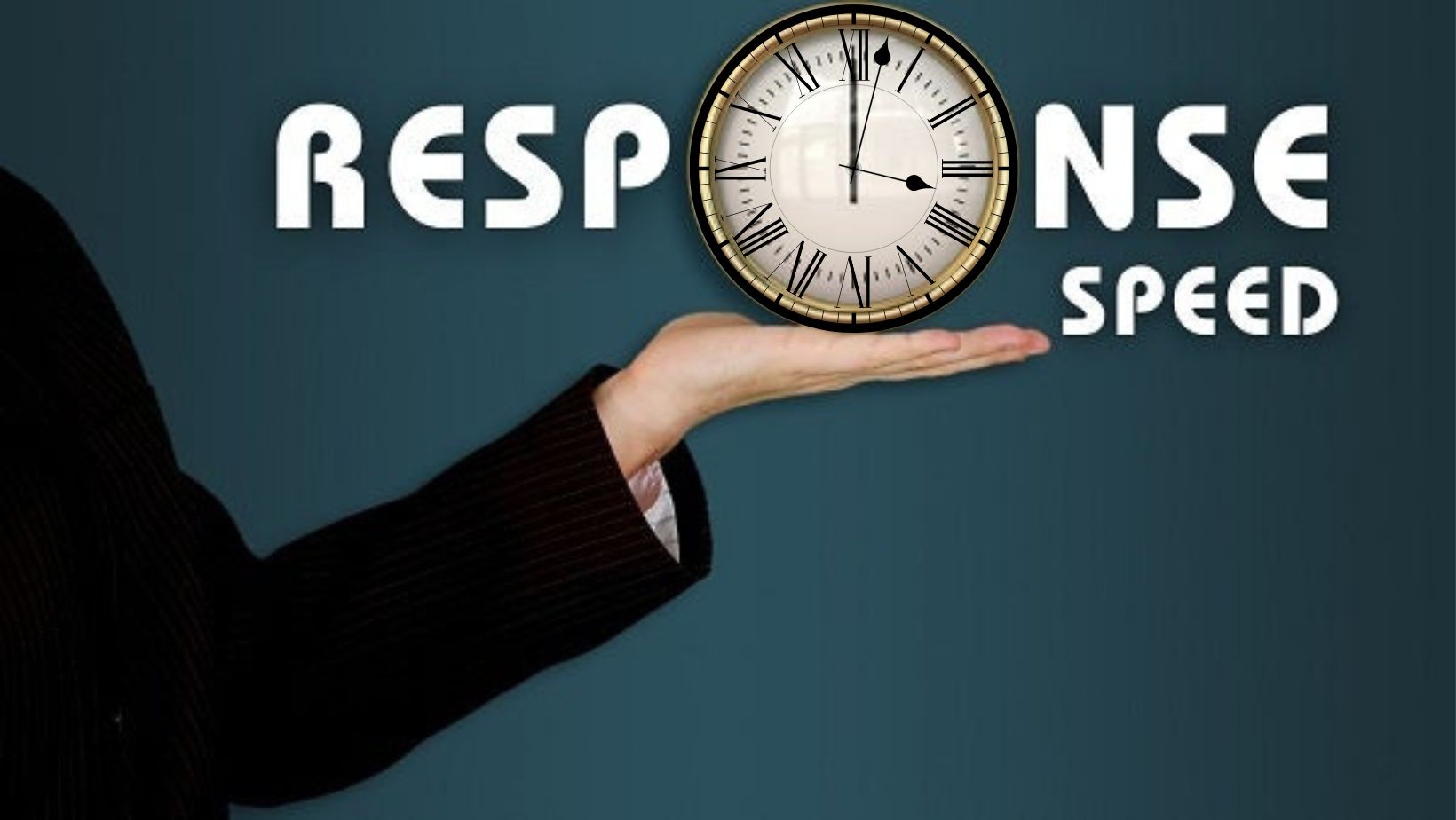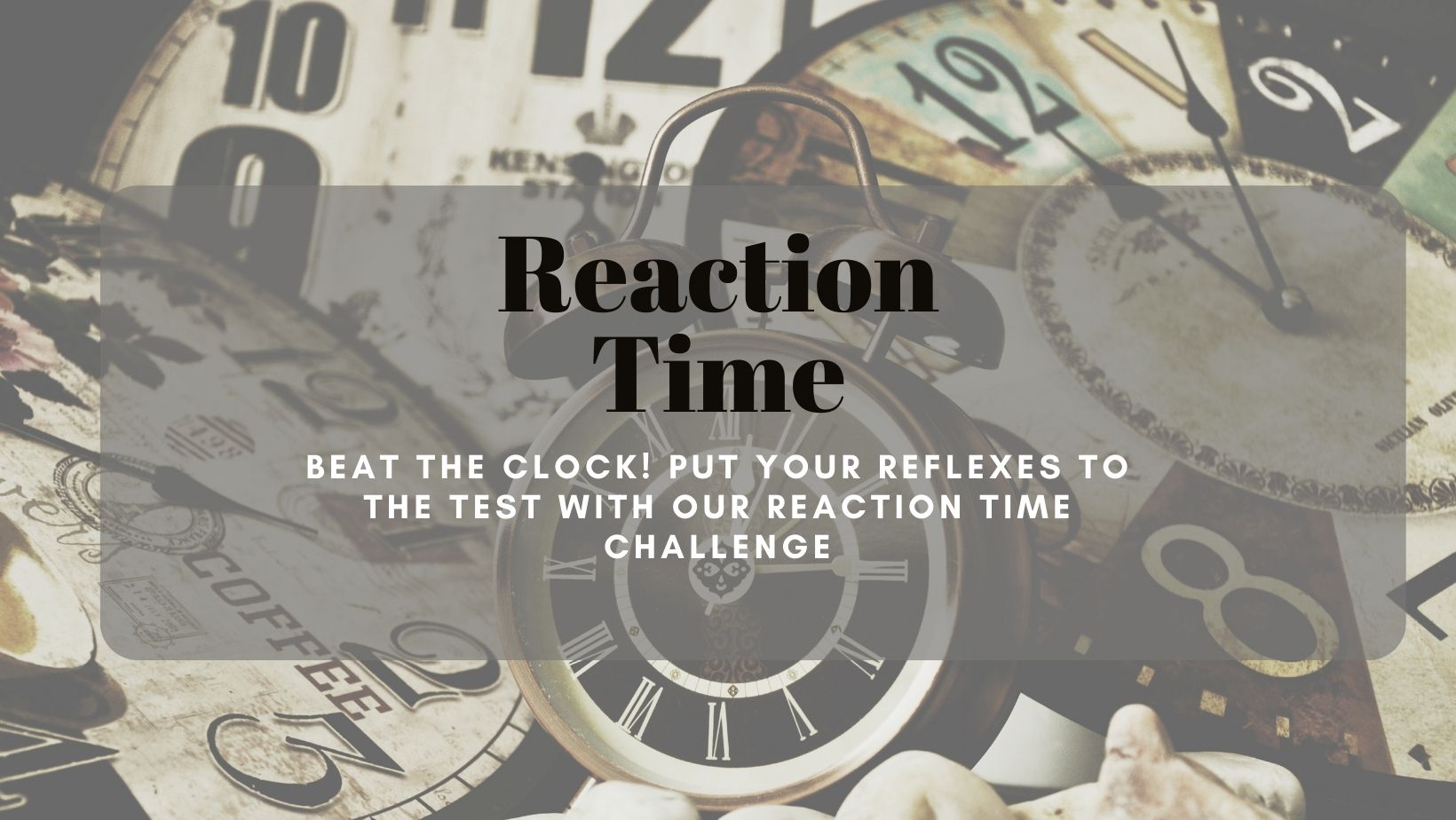The Fundamentals of Human Reaction Time: A Comprehensive Guide
Posté le 05/08/2023
Human cognition is fundamentally affected by the idea of response time, which has an effect on how quickly and precisely we can react to environmental inputs. Our reaction time is crucial in many different areas of our lives, including catching a ball, making split-second judgments, operating a vehicle, and participating in sports.
The improvement of performance and safety in regular activities and competitive contexts depends on this fundamental cognitive ability. reaction time test are a useful way to understand and measure our reaction times as well as our cognitive and motor abilities.
In this post, we'll look at the importance of response time, its uses in many contexts, and the approaches used to gauge and enhance this crucial cognitive ability. We want to provide readers with a deeper grasp of this important facet of human behavior and its possible consequences for improving overall performance and decision-making skills by digging into the complexities of reaction time.
In this thorough tutorial, we will go into the science of human response time, look at the variables that influence it, and talk about how to enhance and optimize this crucial cognitive ability.

What is Reaction Time?
The time it takes for an individual to respond to a certain stimuli is referred to as reaction time. It measures how quickly our brains understand information and produce a motor response. Reaction time is commonly measured in milliseconds (ms) and varies depending on the type of stimulus and task complexity.
The length of time that passes between when we observe something and when we respond to it is referred to as reaction time or response time. It is the capability of detecting, processing, and responding to a stimulus.
The duration of time it takes for a person to react to a particular stimulus or event in their surroundings is known as their reaction time. It is the period of time between the stimulus's presentation and the start of the response. The perception of the stimulus, information processing, and finally the execution of a motor response are all parts of this cognitive process.
A key component of human cognition, reaction time is essential for numerous activities including sports, driving, playing video games, and daily decision-making. Our performance and safety in many situations can be dramatically impacted by how quickly and effectively we react.
Understanding and measuring reaction time can provide valuable insights into cognitive processing, attention, and motor coordination, allowing individuals to optimize their reflexes and make quick and accurate responses when facing different challenges. Reaction time tests are commonly used to assess and quantify an individual's reaction speed, and they have applications in fields like psychology, neuroscience, sports, and human-computer interaction.
The Science Behind Reaction Time:
The process of reaction time begins with the presentation of a stimulus, which can be visual, auditory, or tactile. The sensory organs detect the stimulus, and the information is relayed to the brain through the nervous system . The brain then processes the information and generates a motor response to react to the stimulus. The time taken for this entire process is recorded as the reaction time.
The science behind reaction time delves into the intricate neural processes and cognitive mechanisms that govern our ability to respond to stimuli. It involves understanding how our brains process information, how sensory inputs are converted into motor commands, and the communication between different parts of the brain during the response generation. Various factors, such as age, attention, experience, and fatigue, can influence reaction time.
Researchers use sophisticated tools and methodologies, including reaction time testing, to study and measure these processes. By unraveling the science behind reaction time, we gain valuable insights into the complexities of human cognition and how our brains orchestrate swift and precise responses in our everyday lives.
Factors Influencing Reaction Time:
Factors influencing reaction time are diverse and play a crucial role in determining how quickly an individual responds to stimuli . These factors can vary from person to person and situation to situation. Age is a significant determinant, as reaction times tend to decline with age due to changes in cognitive processing and motor coordination.
Experience and training can also impact reaction time, with individuals who have specific skills or expertise in certain activities exhibiting faster responses. Fatigue and distractions can slow down reaction times, while motivation and attention can enhance them. Additionally, the complexity of the task and the type of stimulus can influence reaction time.
Understanding these factors is essential for optimizing reaction time through targeted training and improving performance in various activities.
Several factors can influence an individual's reaction time:
Age: Reaction times tend to decline with age, as cognitive processing speed and motor coordination may decrease.
Experience and Training: Individuals who have specific training or practice in certain activities may exhibit faster reaction times in those areas.
Fatigue: Fatigue can slow down reaction times, as tired individuals may not respond as quickly to stimuli.
Distractions: External distractions can affect reaction time, as individuals may take longer to process stimuli in a distracting environment.
 Reaction Time Testing:
Reaction Time Testing:
Reaction time testing is a standardized assessment used to measure an individual's response time to specific stimuli. It is conducted through simple and interactive exercises, such as pressing a button in response to a visual cue or clicking a mouse in reaction to an auditory signal. Reaction time tests provide valuable data for understanding an individual's responsiveness and cognitive processing speed.
Reaction time testing is a standardized assessment used to measure an individual's response time to specific stimuli. It is a fundamental tool employed in various fields, including sports, cognitive research, and clinical settings. During the test, participants are presented with visual, auditory, or tactile cues, and their reaction time is recorded in milliseconds (ms).
The goal is to determine how quickly an individual can process information and generate a motor response. Reaction time testing provides valuable insights into cognitive processing speed, attention, and reflexes, making it a valuable tool for assessing performance, safety, and overall cognitive functioning in individuals of all ages.
Applications of Reaction Time:
Reaction time has numerous applications in various fields:
Sports Performance: In sports like basketball, soccer, and tennis, fast reaction times can give athletes a competitive edge in reacting to opponents' moves.
Driving Safety: Reaction time is critical for safe driving, as quick responses can prevent accidents and avoid potential hazards on the road.
Cognitive Abilities: Reaction time is a measure of cognitive processing speed, and faster reaction times are associated with better attention, memory, and decision-making skills.
Human-Computer Interaction: Reaction time tests are used in user experience design to assess the efficiency of systems and interfaces.
Improving Reaction Time:
The good news is that reaction time can be improved through targeted training and practice. Cognitive training exercises, anticipation drills, and sport-specific practices can all enhance reflexes and decision-making skills. Video games that involve fast-paced action have also shown promise in improving reaction time.
Improving reaction time is a goal shared by athletes, gamers, and individuals seeking enhanced cognitive performance. Reaction time, the ability to respond swiftly and accurately to stimuli, plays a crucial role in various activities, from sports to driving. Through targeted exercises and training techniques, individuals can boost their reflexes and decision-making skills.
Cognitive training, anticipation drills, and sport-specific practices are effective ways to enhance reaction time. With consistent practice and dedication, individuals can improve their responsiveness, enabling them to excel in dynamic and fast-paced environments. Ultimately, honing reaction time leads to better performance, increased safety awareness, and a competitive edge in various endeavors.
Conclusion :
Understanding the fundamentals of human reaction time is essential for optimizing this critical cognitive skill. Reaction time plays a pivotal role in our daily lives and performance across various activities. By recognizing the factors that influence reaction time and adopting effective training strategies, individuals can unlock their reflexes and achieve better performance, safety, and overall cognitive functioning.

